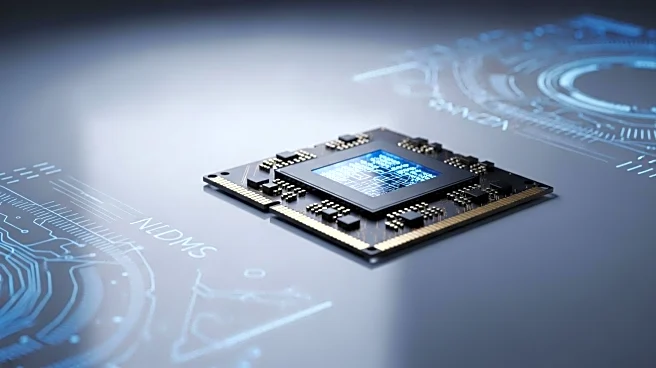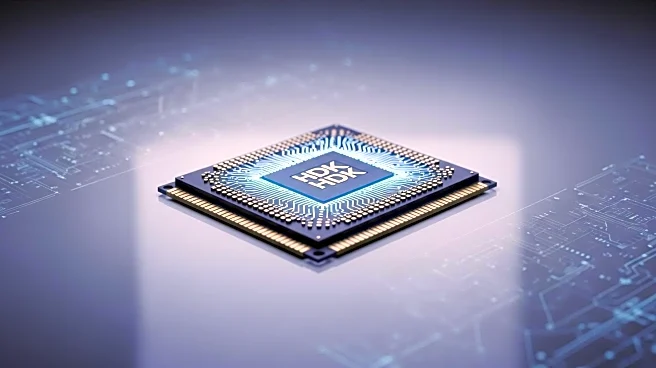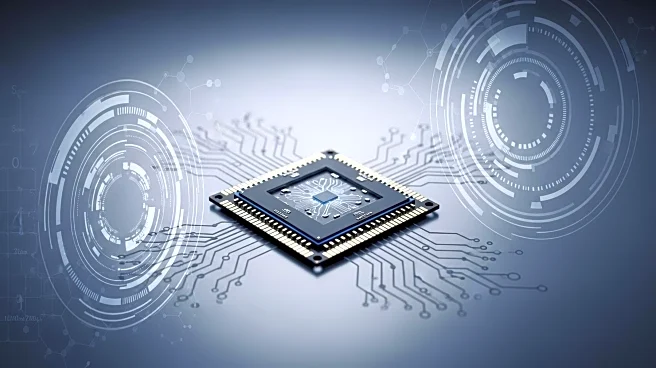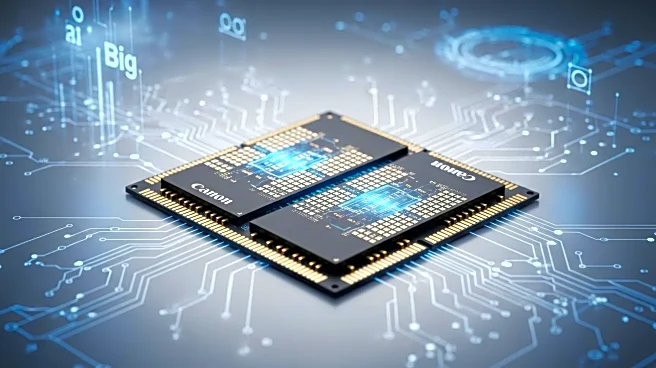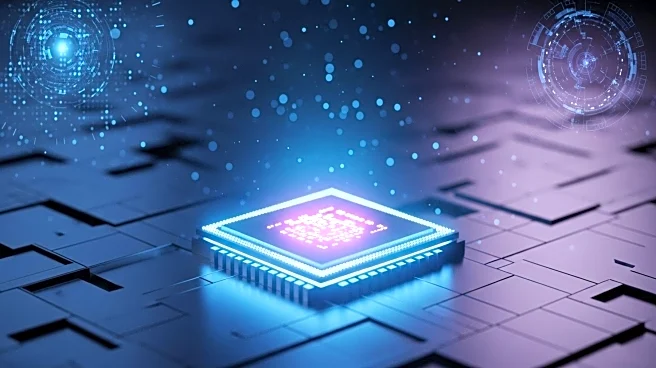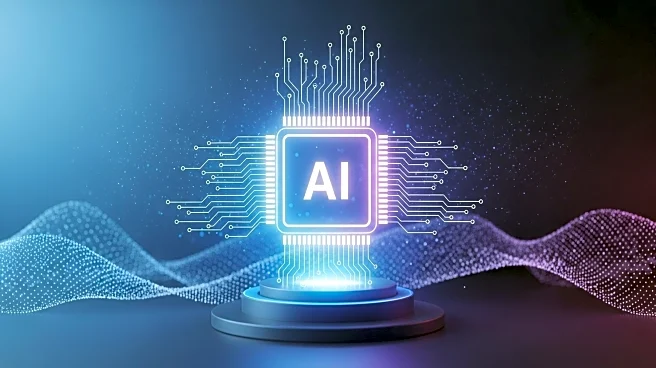What's Happening?
Fudan University has developed the world's first two-dimensional-silicon-based hybrid architecture chip, with research results published in the journal Nature. This chip integrates two-dimensional ultrafast flash memory with the CMOS process, overcoming engineering challenges in two-dimensional information devices. The chip supports 8-bit instruction operations, 32-bit high-speed parallel operations, and random addressing, achieving a yield rate of 94.34%. This development marks a milestone in two-dimensional electronic device engineering, following the team's previous breakthrough with the "PoX" picosecond flash memory device.
Why It's Important?
The innovative memory chip developed by Fudan University represents a significant advancement in semiconductor technology, potentially disrupting traditional memory systems. By integrating two-dimensional materials with CMOS technology, the chip offers faster and lower-energy data support, which could benefit fields such as artificial intelligence and big data. This breakthrough may lead to new applications and efficiencies in computing, positioning two-dimensional flash memory as a standard storage solution in the AI era.
What's Next?
The research team plans to establish an experimental base and collaborate with institutions to further develop the technology. They aim to integrate the project to the megascale level within 3-5 years, potentially licensing intellectual property rights to cooperative enterprises. This strategic development could accelerate the commercialization of two-dimensional electronic devices, driving innovation in the semiconductor industry.
Beyond the Headlines
The integration of two-dimensional materials with CMOS technology highlights the potential for fundamental innovations in device mechanisms. As researchers continue to explore the scalability and applications of two-dimensional electronics, the industry may witness transformative changes in memory systems and computing power, paving the way for disruptive technologies and applications.
